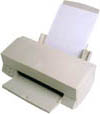The Participle Phrase
Recognize a participle phrase when you find one.
A participle phrase will begin with a present or past participle. If the participle is present, it will dependably end in ing. Likewise, a regular past participle will end in a consistent ed. Irregular past participles, unfortunately, conclude in all kinds of ways. (See this list for examples.)
Since all phrases require two or more words, a participle phrase will often include objects and/or modifiers that complete the thought.
Here are examples:
Crunching caramel corn for the entire movie
Washed with soap and water
Stuck in the back of the closet behind the obsolete computer
Participle phrases always function as adjectives, describing a nearby noun or pronoun.
Read these examples:
The horse trotting up to the fence hopes that you have an apple or carrot.
Trotting up to the fence modifies the noun horse.
The water drained slowly in the pipe clogged with dog hair.
Clogged with dog hair modifies the noun pipe.
Eaten by mosquitoes, we wished that we had made hotel, not campsite, reservations.
Eaten by mosquitoes modifies the pronoun we.
Do not confuse a present participle phrase with a gerund phrase.
Present participle phrases and gerund phrases are easy to confuse because they both begin with an ing word. The difference is the function that they provide in a sentence. A present participle phrase will always act as an adjective while a gerund phrase will always behave as a noun.
Consider these examples:
Walking on the beach, Delores dodged the jellyfish that had washed ashore.
Walking on the beach = present participle phrase describing the noun Delores.
Walking on the beach is painful if jellyfish have washed ashore.
Walking on the beach = gerund phrase, the subject of the verb is.
Waking to the buzz of the alarm clock, Freddie cursed the arrival of another Monday.
Waking to the buzz of the alarm clock = present participle phrase describing the noun Freddie.
Freddie hates waking to the buzz of the alarm clock.
Waking to the buzz of the alarm clock = gerund phrase, the direct object of the verb hates.
After a long day at school and work, LaShae found her roommate Ben eating the last of the leftover pizza.
Eating the last of the leftover pizza = present participle phrase describing the noun Ben.
Ben's rudest habit is eating the last of the leftover pizza.
Eating the last of the leftover pizza = gerund phrase, the subject complement of the verb is.
Punctuate a participle phrase correctly.
When a participle phrase introduces a main clause, separate the two sentence components with a comma.
This is the pattern:
Participle Phrase + , + Main Clause.
Read this example:
Glazed with barbecue sauce, the rack of ribs lay nestled next to a pile of sweet coleslaw.
When a participle phrase concludes a main clause and is describing the word right in front of it, you need no punctuation to connect the two sentence parts.
This is the pattern:
Main Clause + Ø + Participle Phrase.
Read this example:
Mariah risked petting the pit bull wagging its stub tail.
But when a participle phrase concludes a main clause and modifies a word farther up in the sentence, you will need a comma.
This is the pattern:
Main Clause + , + Participle Phrase.
Read this example:
Cooper enjoyed dinner at Audrey's house, agreeing to a large slice of cherry pie even though he was full to the point of bursting.
The house, of course, is not doing the agreeing; Cooper is! Because of the distance between Cooper and the participle phrase that describes him, the comma is necessary.
Don't misplace or dangle participle phrases.
Introductory participle phrases are the most common modifier to misplace or dangle. In clear, logical sentences, you will find these modifiers right next to the words that they describe.
Shouting with happiness, William celebrated his chance to interview at SunTrust Bank.
Notice that the participle phrase sits right in front of William, the one doing the shouting.
If too much distance separates an introductory participle phrase and its target, the modifier is misplaced.
Draped neatly on a hanger, William borrowed Grandpa's old suit to wear to the interview.
The suit, not William, is on the hanger! The modifier must come closer to the word it is meant to describe:
For the interview, William borrowed Grandpa's old suit, which was draped neatly on a hanger.
If the sentence fails to include a target, the modifier is dangling.
Straightening his tie and smoothing his hair, the appointment time for the interview had finally arrived.
We assume William is about to interview, but where is he in the sentence? We need a target for the participle phrase straightening his tie and smoothing his hair.
Straightening his tie and smoothing his hair, William was relieved that the appointment time for the interview had finally arrived.
©1997 - 2025 by Robin
L. Simmons
All Rights Reserved.
